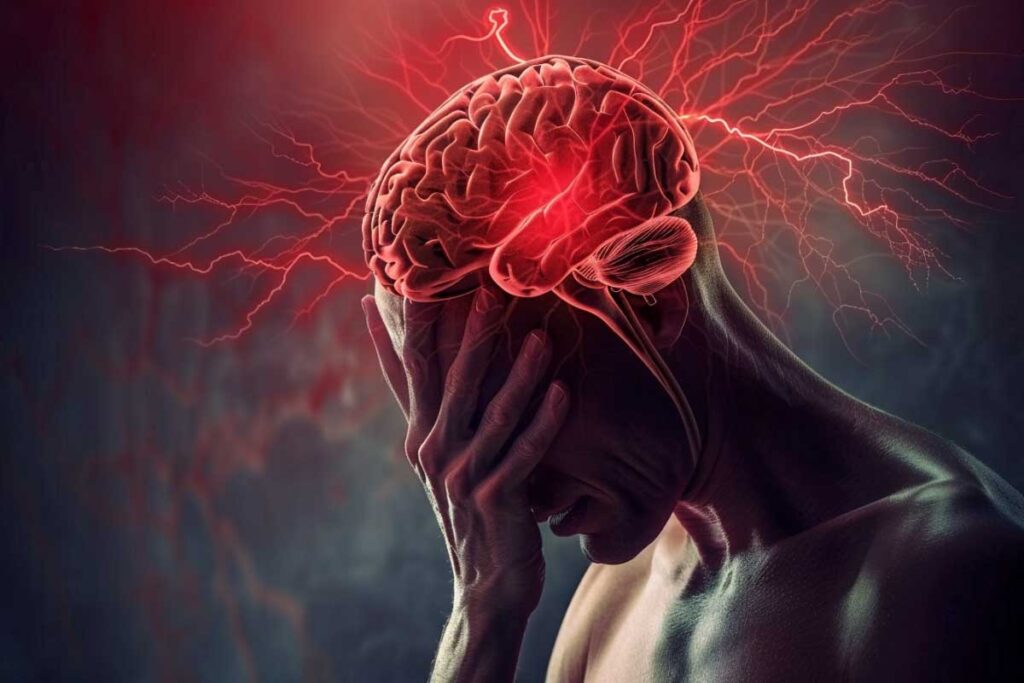Strokes terrify me. Nearly 800,000 people in the U.S. have one each year. That’s one every 40 seconds!
As someone with a family history and high blood pressure, my risk is elevated. But learning the symptoms of a stroke empowers me to spot one fast and get help.
According to Dr. Brandon Giglio of NYU Langone Hospital, about 85% of strokes are ischemic – caused by blocked blood flow to the brain. The other 15% are hemorrhagic – bleeding in the brain from a ruptured vessel.
Here’s the scary part – many who eventually have a major stroke first experience a “warning stroke” days or weeks prior. I spoke to my doctor and learned these red flags:
- Sudden numbness or weakness on one side of the body
- Slurred speech or trouble communicating
- Vision problems like double vision or loss of vision
- Dizziness and loss of balance or coordination
If I experience any of these, even if they go away quickly, it’s vital to get checked out. It could signal a mini-stroke and my risk of a full stroke within 90 days skyrockets. Calling 911 at the first odd symptom could save my brain and my life.
Yes, strokes are common and serious. But by knowing the signs of a warning stroke, I’m now armed with the power to recognize it fast and get the right care. Talk to your doctor and know what to watch for. It just might make all the difference.
I Just Learned About “Warning Strokes” – And Now I’m On High Alert
Want to hear something scary? There’s a medical condition called a “warning stroke” that often comes before a full-blown stroke. And most people have no clue it even exists.
I sure didn’t until I spoke with doctors about the risks. Now I’m staying vigilant so I can act fast if it happens to me or someone I love.
So what exactly is a warning stroke? The medical name is a transient ischemic attack or TIA for short. Basically, it causes stroke-like symptoms that come on quickly but resolve within 24 hours.
While there may not be permanent damage, don’t let the “mini” part fool you. Up to 1 in 5 people who have a TIA end up having an actual stroke within 90 days if they don’t seek care.
That’s because it’s often a harbinger of a full stroke on the horizon, says Dr. Brandon Giglio of NYU Langone Hospital. Some people even progress to a stroke within 48 hours.
That’s why I’m not going to think of it as a “mini” stroke anymore. Calling it a warning stroke highlights that it’s just as much an emergency as a regular stroke.
At the first sign of symptoms like face drooping, arm weakness, or slurred speech – even if they go away – I will call 911 without hesitation. Time equals brain with strokes.
Rapid treatment could buy precious hours to prevent catastrophic damage. Now that I know about warning strokes, I feel empowered to act quickly and spread awareness.
Your brain health is too important to play around with. Ask your doctor about warning signs so you can protect yourself too!
Warning Strokes and Strokes Share the Same Red Flag Symptoms
Learning about warning strokes opened my eyes to their danger. But here’s the scariest part – the signs of a stroke and warning stroke are identical.
That means I can’t afford to downplay or ignore any odd symptoms, even if they’re fleeting. I need to memorize the emergency acronym BE FAST so I can recognize a warning stroke and get prompt care.
B – Balance issues or trouble with coordination
E – Eyesight changes like blurred or double vision
F – Facial drooping, often on just one side
A – Arm/leg weakness or numbness on one side
S – Speech problems like slurred words or confusion
T – Terrible sudden headache or time to call 911!
According to the doctors I spoke with, these symptoms come on rapidly with both strokes and warning strokes. The difference is their duration.
While a regular stroke causes permanent damage, the effects of a warning stroke resolve within 24 hours. But any sign from BE FAST requires an instant 911 call.
I’m not going to wait around to see if other red flags pop up or try to tough it out. At the first spotted symptom, I’ll seek emergency care right away.
My quick action could prevent a devastating stroke down the line. Knowing these warning signs gives me power to protect myself and those I love. Please learn them too, and help spread the word!
Fleeting Symptoms: A Quick Guide
I used to think that stroke symptoms had to last a long time to be a real concern. Boy, was I wrong.
Warning strokes taught me that even fleeting signs are a five-alarm emergency. The key is how fast the symptoms appear, not how long they stick around.
Doctors say most warning strokes last less than an hour, often just minutes. Some may only be 30-60 seconds!
It’s easy to brush off a minute of numbness or garbled speech. I’m guilty of that mindset too. But there’s no way to predict if odd symptoms will fade or turn into lasting damage.
So I’m making this solemn pledge – if I ever experience sudden signs like face drooping or vision loss, even for a minute, I will call 911 without hesitation.
I’m not going to waste precious time wondering or waiting it out. Rapid treatment could prevent a devastating stroke down the line.
Please, learn from my mistake. Never downplay fleeting symptoms. Any amount of time with warning stroke red flags is too long. Speak up and seek emergency care ASAP. It could save your brain and your life.
When to Call for Help: Recognizing Critical Symptoms
Here’s my perspective after learning how vital it is to get immediate help for warning stroke symptoms:
The instant I notice sudden signs like numbness, vision issues, or slurred speech – even if they fade fast – I’m calling 911, no hesitation.
Doctors warned me never to wait and see if symptoms disappear. Too dangerous – they could worsen quickly without me realizing.
Like one expert said, I’ll make it crystal clear I think it’s a stroke when I get to the ER. No downplaying or beating around the bush. Time is precious when it comes to saving brain.
If I can’t get to the hospital, I’ll call my doctor immediately. Not in a few days – immediately. Many people progress to a full stroke within 48 hours of a warning one.
I used to brush off fleeting sensations. Now I know every second counts with a warning stroke. My new motto: when in doubt, get help.
I’m empowered by this knowledge, not paralyzed by fear. Recognizing the signs and acting swiftly could make all the difference.
I urge everyone to learn warning stroke red flags. At the first sign, make the call. You just might save a life – maybe your own.
How to Lower Your Risk: Effective Strategies
Here’s my takeaway after learning about ways to reduce my stroke risk:
The scariest part about warning strokes is that they can strike anyone. But I’m relieved there are steps I can take to lower my chances.
My doctor said managing conditions like high cholesterol, diabetes, and high blood pressure is key. I may need medication, but lifestyle changes like more exercise, a healthier diet, and quitting smoking can go a long way.
I used to drag my feet on getting check-ups. No more! Now I’m committed to regular screenings and actively improving my health. An ounce of prevention is worth a pound of cure when it comes to stroke.
On top of prevention, I’m telling all my friends and family to know the warning signs. Sudden trouble with balance, vision, speech – call 911 at the first red flag, even if it fades. Every second counts with a warning stroke.
Strokes are unfortunately very common. But we’re not powerless against them! Taking control of my health and spreading awareness makes me feel empowered.
Please, take preventative steps and learn stroke symptoms. Together we can lower risks, get prompt treatment, and protect precious lives – including our own.
I feel grateful that such small but mighty steps could ward off a life-changing stroke for someone I love. There’s no time like the present to make a difference.
This story first appeared on Buzzfeed.com by Jillian Wilson (HuffPost Writer).
More resources:
- Is Ozempic Face Permanent? Exploring Long-Term Effects, Weight Loss, and Facial Changes
- 5 Surprising Ways Weight Loss Drugs Like Ozempic Can Boost Your Health
- What Is Ozempic Face? Why Does It Happen And How To Avoid It?
- Understanding Ozempic Face: The Impact of Rapid Weight Loss on Facial Appearance






